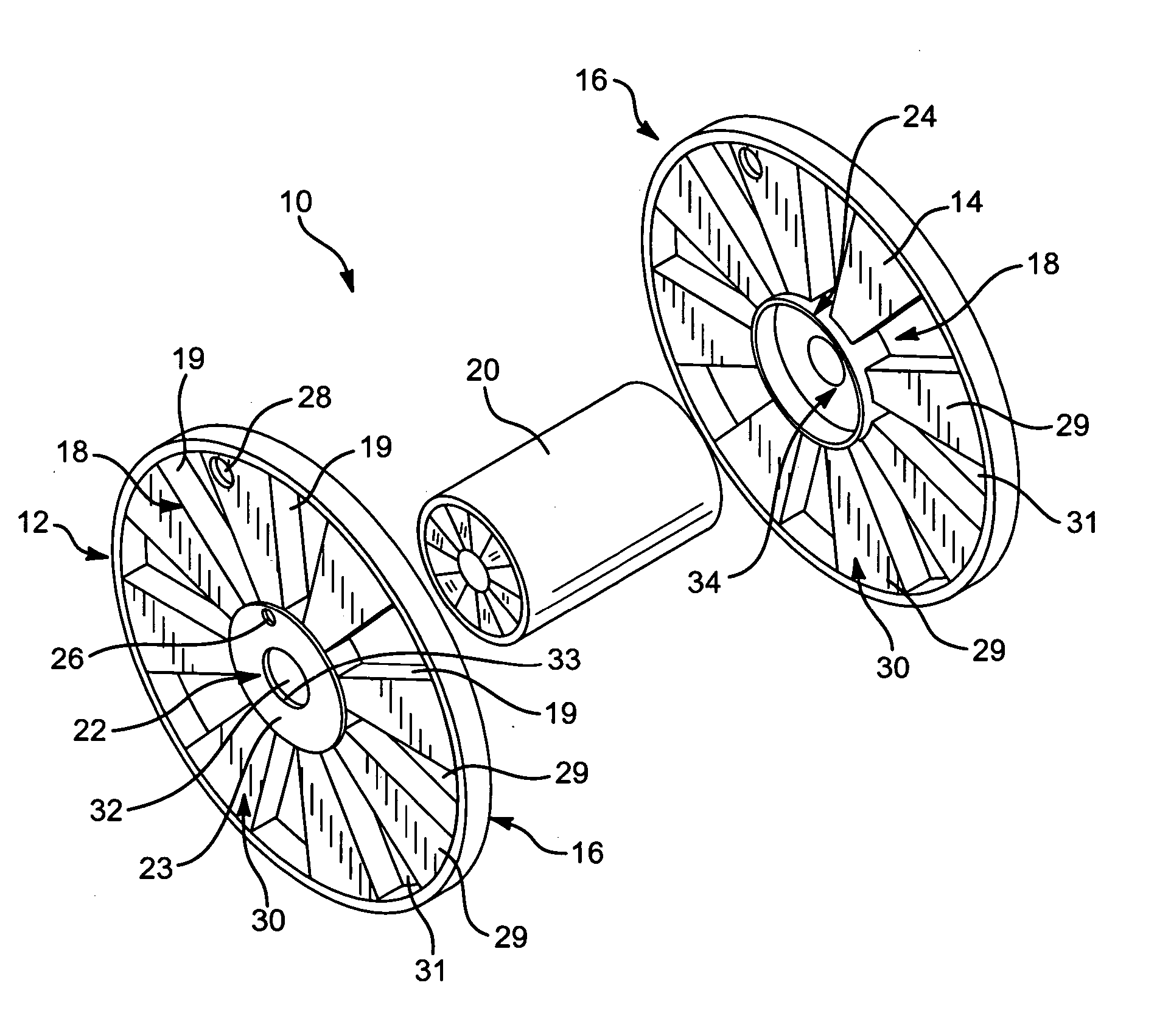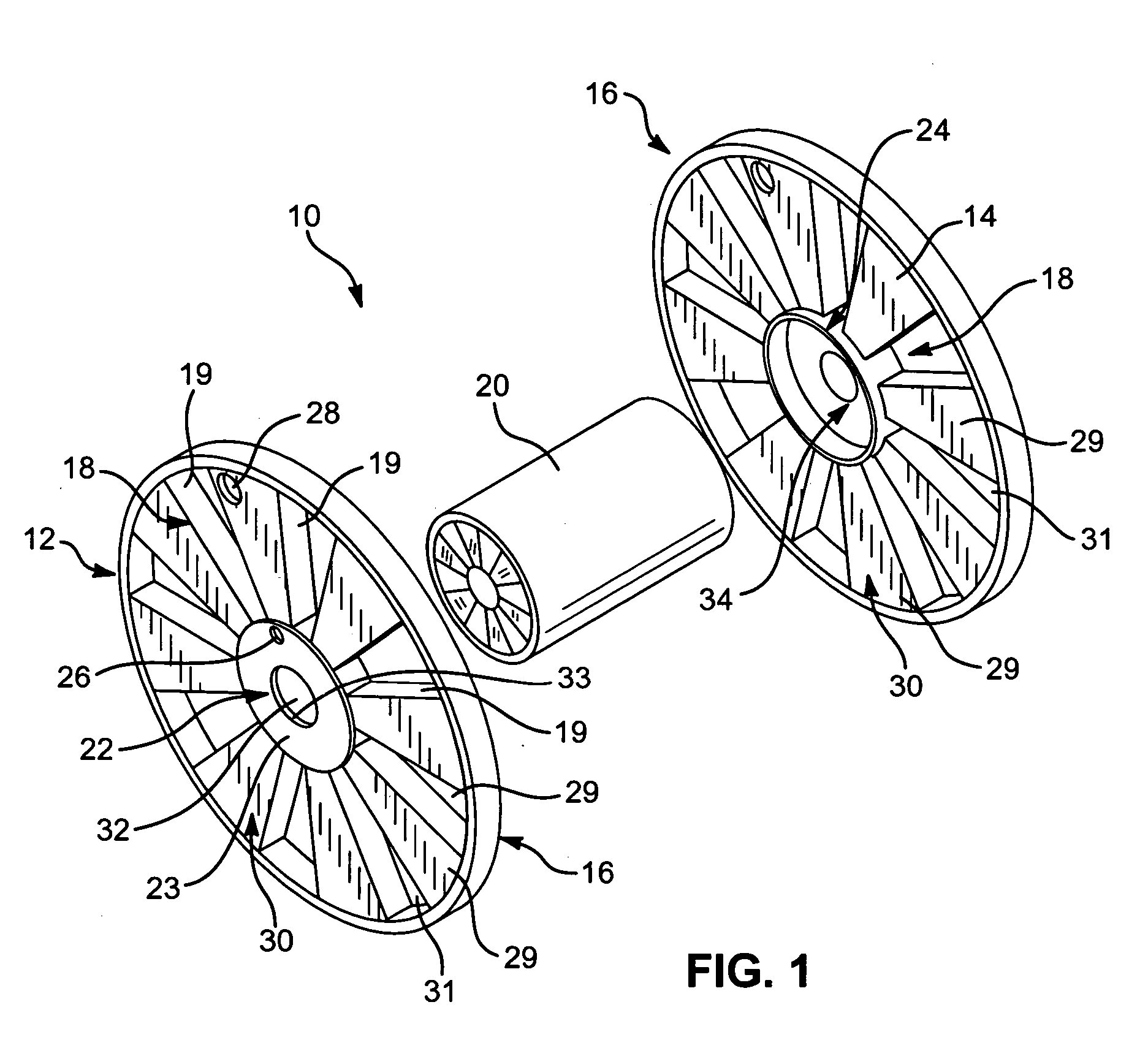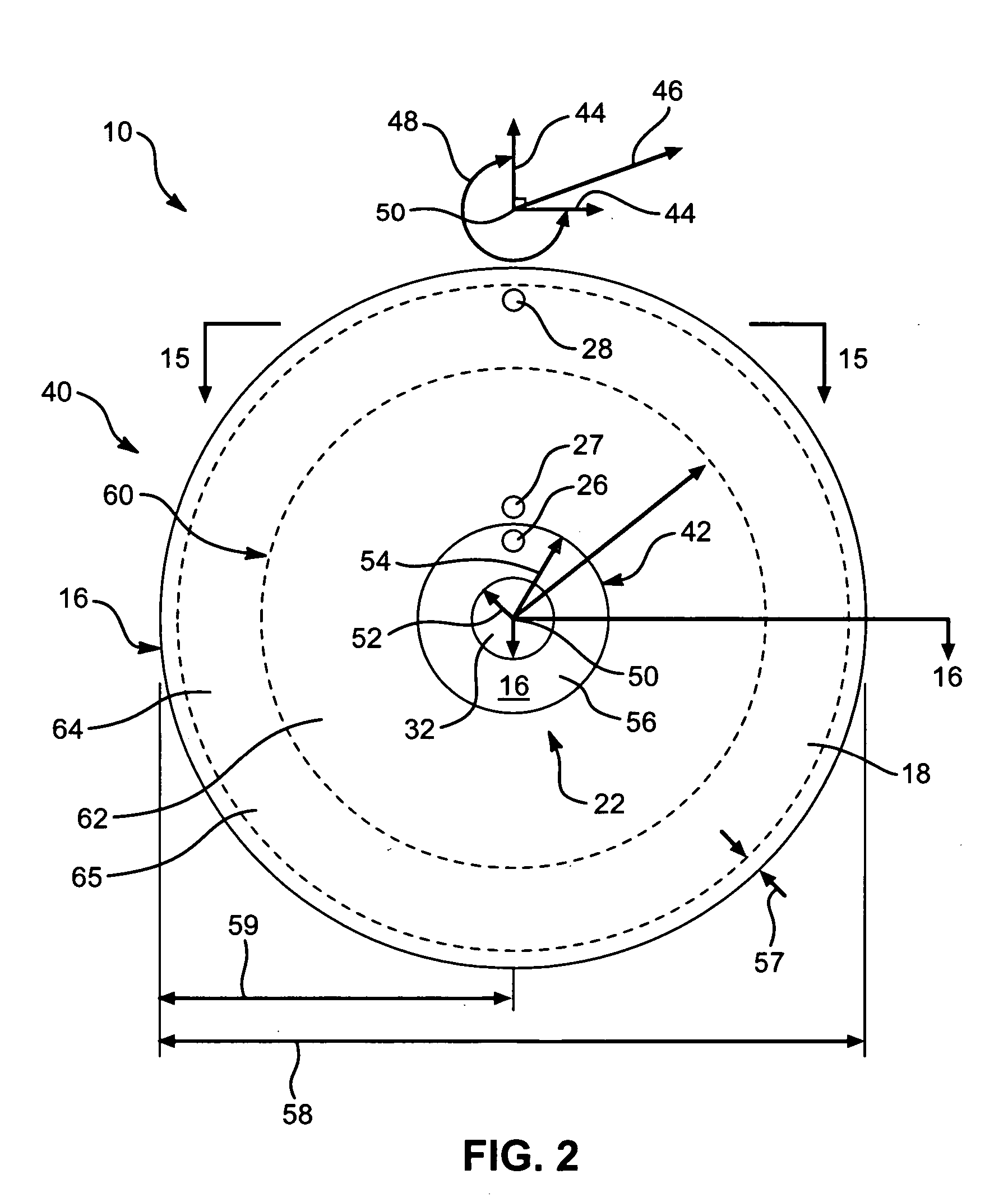Corrugated flanges for spools and reels
a technology of corrugated flanges and spools, applied in the field of corrugated flanges for spools and reels, can solve the problems of inability to implement all engineering principles that are available in manufacturing techniques, the junctions with flanges are not inherently resistant to fracture from impact loads, etc., to achieve the effect of improving strength, stiffness, distortion and toughness
- Summary
- Abstract
- Description
- Claims
- Application Information
AI Technical Summary
Benefits of technology
Problems solved by technology
Method used
Image
Examples
Embodiment Construction
[0091] It will be readily understood that the components of the present invention, as generally described and illustrated in the Figures herein, could be arranged and designed in a wide variety of different configurations. Thus, the following more detailed description of the embodiments of the apparatus and methods of the present invention is not intended to limit the scope thereof. Rather, the scope of the invention is as broad as claimed herein. The illustrations merely represent certain, presently preferred embodiments of the invention. Embodiments of the invention will be best understood by reference to the drawings, wherein like parts are designated by like numerals throughout.
[0092] Those of ordinary skill in the art will, of course, appreciate that various modifications to the details of the apparatus and methods illustrated in the Figures may easily be made without departing from the essential characteristics of the invention. Thus, the following description of the Figures ...
PUM
| Property | Measurement | Unit |
|---|---|---|
| diameter | aaaaa | aaaaa |
| diameter | aaaaa | aaaaa |
| diameter | aaaaa | aaaaa |
Abstract
Description
Claims
Application Information
 Login to View More
Login to View More - R&D
- Intellectual Property
- Life Sciences
- Materials
- Tech Scout
- Unparalleled Data Quality
- Higher Quality Content
- 60% Fewer Hallucinations
Browse by: Latest US Patents, China's latest patents, Technical Efficacy Thesaurus, Application Domain, Technology Topic, Popular Technical Reports.
© 2025 PatSnap. All rights reserved.Legal|Privacy policy|Modern Slavery Act Transparency Statement|Sitemap|About US| Contact US: help@patsnap.com



